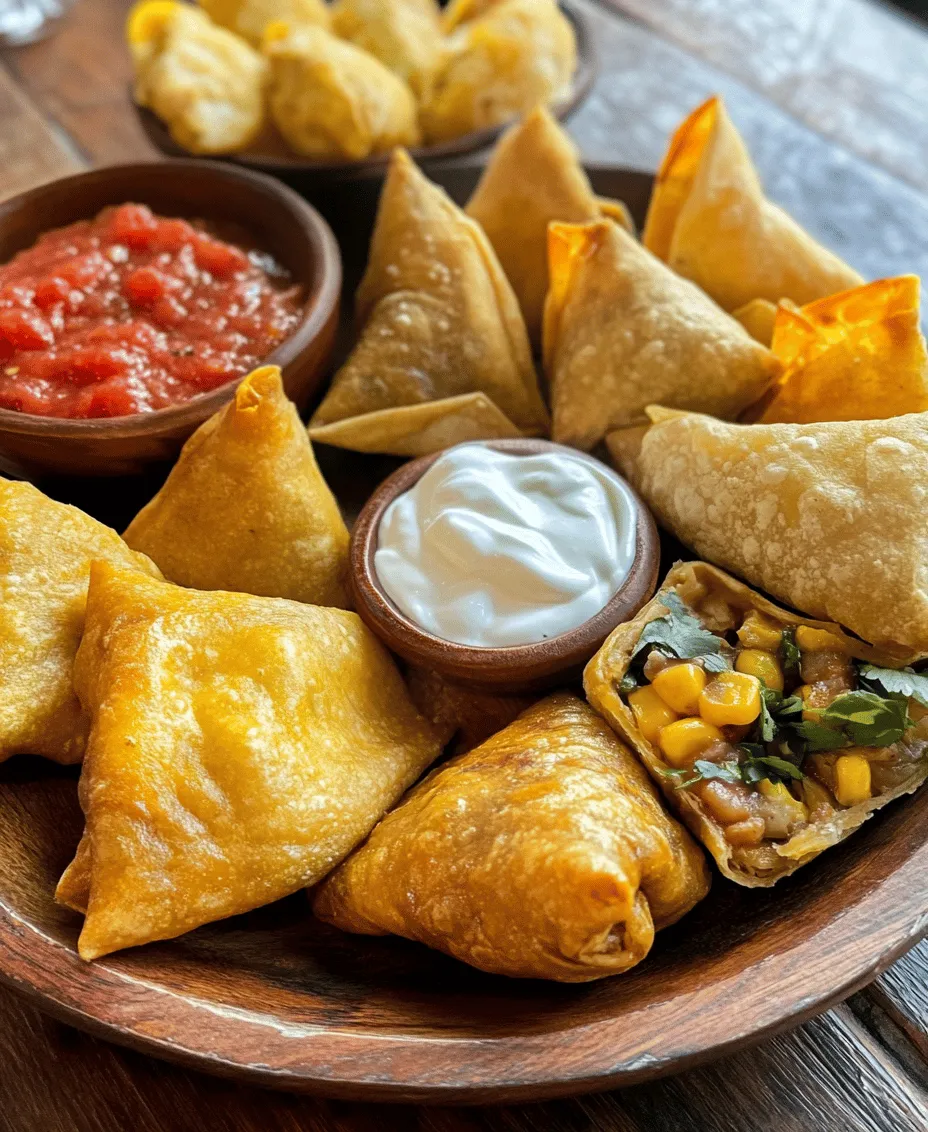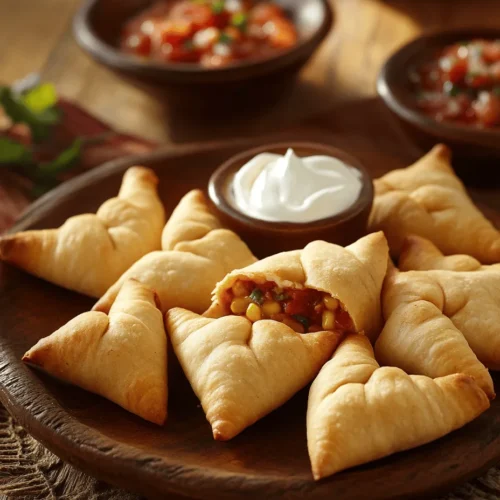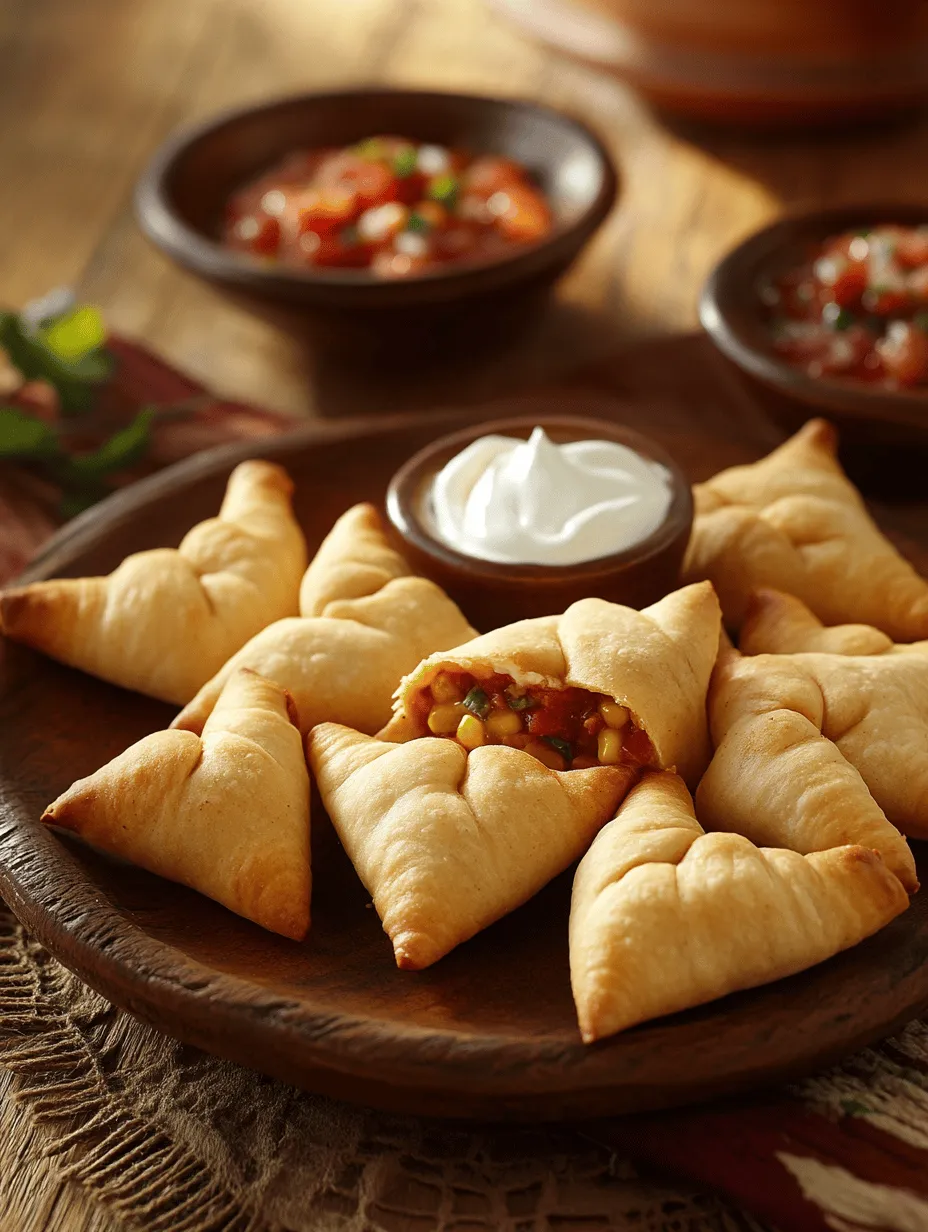Introduction to Corundas: A Culinary Gem of Michoacán
Nestled in the heart of Mexico, Michoacán is a state renowned for its rich culinary heritage, vibrant culture, and breathtaking landscapes. One of the jewels of Michoacán cuisine is corundas, a traditional dish that encapsulates the essence of regional flavors and cooking techniques. These delightful corn dumplings, often compared to tamales, are a beloved staple among locals and a must-try for any culinary enthusiast seeking to explore the authentic tastes of Mexico.
Originating from the Purepecha culture, corundas are not merely food; they are a representation of the region’s history and agricultural bounty. Made primarily from masa harina—a finely ground corn flour—these dumplings are uniquely shaped and served with various fillings, making them a versatile dish suitable for any meal. The preparation of corundas is steeped in tradition, often passed down through generations, highlighting the community’s deep-rooted connection to their culinary practices.
The process of making corundas begins with the careful selection of ingredients that reflect the region’s agricultural diversity. Key components include masa harina, corn husks, and a variety of fillings that can range from cheese and beans to shredded meats. The combination of these ingredients comes together in a meticulously crafted recipe that showcases the artistry involved in Michoacán’s cooking.
In this article, we will delve deeper into the intricate world of corundas, exploring their essential ingredients and providing a step-by-step guide to preparing them at home. Whether you are a seasoned cook or a newcomer to Mexican cuisine, this recipe will allow you to experience the authentic taste of Michoacán, celebrating its culinary legacy in your very own kitchen.
Understanding the Ingredients: The Building Blocks of Corundas
To appreciate corundas fully, one must understand the importance of each ingredient that contributes to this delightful dish. Each component plays a crucial role in achieving the distinct flavors and textures that characterize corundas.
Masa Harina: The Heart of the Dish
At the core of every corunda lies masa harina, a cornerstone of Mexican cuisine. This fine flour is made from dried corn that has undergone nixtamalization—a process where the corn is soaked and cooked in an alkaline solution, usually limewater. This not only enhances the nutritional value but also gives masa harina its unique flavor and aroma.
Masa harina is versatile, used in various traditional Mexican dishes such as tortillas, tamales, and sopes. For corundas, the masa must be mixed with water and a pinch of salt to create a smooth, pliable dough. This dough serves as the base for shaping the corundas and holds the fillings together, ensuring that each bite is a perfect balance of flavors.
Corn Husks: A Natural Wrapper
The use of corn husks in making corundas is integral to both the cooking process and the presentation of the dish. Corn husks, which are the dried leaves that envelop the corn cob, serve as a natural wrapper that helps steam the corundas, locking in moisture and flavor while imparting a subtle earthiness to the dumplings.
To prepare the corn husks for use, they need to be soaked in warm water for about 30 minutes. This softens them, making them pliable and easier to wrap around the masa and fillings. A well-prepared corn husk is essential for ensuring that the corundas maintain their shape and cook evenly.
Fillings: Customization and Tradition
One of the most exciting aspects of corundas is their versatility when it comes to fillings. Traditionally, corundas can be filled with a variety of ingredients, allowing for customization based on personal preference and regional tastes. Common fillings include:
– Cheese: A popular choice, especially when using fresh, locally made cheese like queso fresco or Oaxaca cheese, which melts beautifully inside the masa.
– Beans: Refried black beans or pinto beans can provide a hearty and nutritious filling, perfect for vegetarian options.
– Shredded Meat: For meat lovers, shredded chicken, pork, or beef can be used, often seasoned with traditional spices that reflect Michoacán’s flavor profile.
The choice of filling not only enhances the taste of the corundas but also showcases the culinary identity of the region, making each bite a celebration of Michoacán’s rich agricultural heritage.
Step-by-Step Guide to Preparing Corundas
Now that we have explored the essential ingredients that form the backbone of corundas, let’s dive into the detailed process of preparing these delicious dumplings. Making corundas may seem daunting at first, but with this comprehensive step-by-step guide, you’ll be able to create them confidently in your own kitchen.
Preparing the Corn Husks
The first step in making corundas is preparing the corn husks. This essential component not only acts as a wrapper but also plays a crucial role in the cooking process. Here’s how to prepare them:
1. Select the Corn Husks: Choose large, intact corn husks for wrapping. Avoid husks that are torn or overly dry, as these can lead to leaks during steaming.
2. Soak the Corn Husks: Place the selected husks in a large bowl or pot and cover them with warm water. Let them soak for about 30 minutes to soften. This will make them easier to work with and less likely to break when wrapping.
3. Drain and Dry: After soaking, remove the husks from the water and gently pat them dry with a kitchen towel. They should be pliable but still sturdy enough to hold their shape.
Making the Masa Mixture
With the corn husks ready, the next step is to prepare the masa mixture. This dough is crucial for achieving the right texture and flavor in your corundas.
1. Combine Masa Harina and Water: In a large mixing bowl, add the masa harina. Gradually pour in warm water while mixing with your hands or a spatula. The amount of water may vary based on the humidity and the brand of masa harina, but aim for a ratio of about 1 cup of masa harina to ¾ cup of water.
2. Add Salt: Once the masa starts to come together, add a pinch of salt. This enhances the flavor of the dough. Continue mixing until the masa is smooth and pliable, resembling a thick dough.
3. Check the Consistency: Proper consistency is key. The masa should be moist but not sticky. It should hold together when formed into a ball without crumbling. If it feels too dry, add a bit more water; if it’s too wet, sprinkle in a little more masa harina.
Shaping the Corundas
Shaping the corundas is a fun and creative process. Here’s how to do it:
1. Divide the Masa: Take a portion of the masa, typically about the size of a golf ball, and flatten it into a disc about ¼ inch thick on a clean surface or your palm.
2. Add the Filling: Place your desired filling in the center of the masa disc. Be careful not to overfill, as this can make wrapping difficult.
3. Shape the Corunda: Bring the edges of the masa disc up and over the filling, pinching to seal it. Then, roll the masa to form a teardrop shape, ensuring the filling is fully encased. The corunda should be compact yet soft.
Wrapping Techniques
Wrapping the corundas in corn husks is essential for steaming and presentation. Follow these tips for effective wrapping:
1. Prepare the Corn Husk: Take a soaked corn husk and lay it flat. If the husk is too wide, you can cut it in half lengthwise.
2. Position the Masa: Place the shaped corunda in the center of the husk, with the pointed end facing one end of the husk.
3. Wrap and Secure: Fold the sides of the husk over the masa, then fold the bottom up to encase the corunda completely. You can tie the top with a strip of husk or kitchen twine to secure it if desired.
Steaming for Perfection
The final step in preparing corundas is steaming them to perfection. Here’s how to do it:
1. Prepare the Steamer: Fill a large pot or steamer with water, ensuring that the water level is below the steaming basket. Bring the water to a boil.
2. Arrange the Corundas: Place the wrapped corundas upright in the steamer basket, ensuring they are not overcrowded. This allows steam to circulate freely around each dumpling.
3. Steam the Corundas: Cover the pot with a lid and steam the corundas for about 45 minutes to an hour. Check the water level occasionally, adding more if necessary to prevent it from drying out.
4. Check for Doneness: The corundas are done when the masa feels firm and pulls away easily from the husk. Allow them to cool slightly before serving.
With this step-by-step guide, you will be well on your way to creating authentic corundas that capture the heart and soul of Michoacán cuisine. The flavors and textures of these delightful dumplings will transport you to the vibrant landscapes of Mexico, celebrating the rich culinary traditions of this incredible region. In the next part of this article, we will explore tips for serving corundas and answer some common questions about this beloved dish.

Steaming Process for Corundas
The key to achieving perfectly cooked corundas lies in the steaming process. Steaming allows the masa, or corn dough, to cook evenly, resulting in a tender texture that is essential for this traditional dish. To steam your corundas effectively, follow these steps carefully:
1. Prepare the Steamer: Start by filling a large pot with water, about 1-2 inches deep. Place a steamer basket or a heatproof plate on top of the pot. Make sure the water level is below the basket or plate to prevent the corundas from getting wet.
2. Temperature Control: Bring the water to a gentle boil over medium heat. The goal is to maintain a steady simmer throughout the cooking process. If the heat is too high, it may cause the water to evaporate too quickly or the corundas to cook unevenly.
3. Arrange the Corundas: Carefully place the wrapped corundas in the steamer basket. Avoid overcrowding; leave some space between each corunda to allow steam to circulate properly.
4. Timing: Cover the pot with a lid, ensuring it fits snugly to trap the steam inside. Steam the corundas for about 45 minutes to 1 hour, depending on their size. To check for doneness, carefully unwrap one corunda; the masa should be firm to the touch and easily separate from the corn husk.
5. Cooling Period: Once cooked, remove the corundas from the steamer and let them cool for a few minutes before serving. This resting time allows the flavors to meld and enhances the overall taste.
Serving Corundas: Elevating the Experience
Corundas are not just a dish; they are a celebration of Michoacán’s culinary heritage. The way they are served can significantly elevate the dining experience. Here are some traditional serving suggestions and accompaniments that will enhance the flavors of your corundas.
Serving Suggestions
1. Traditional Accompaniments: Corundas are often served with a dollop of sour cream and a side of salsa, which adds rich creaminess and a zesty kick. The contrast between the soft masa and the tangy toppings creates a delightful balance.
2. Garnishes: In addition to sour cream, consider garnishing your corundas with crumbled cheese, fresh cilantro, or diced onions. These simple touches add layers of flavor and visual appeal.
3. Presentation: To serve corundas elegantly, place them on a vibrant plate and arrange the toppings in separate small bowls. This allows guests to customize their plates according to their preferences.
Pairing with Beverages
To complement the rich flavors of corundas, consider serving traditional beverages that pair well with this dish:
1. Atole: A warm corn-based drink, atole is a classic accompaniment to corundas. Its creamy texture and mild sweetness enhance the overall experience.
2. Tequila or Mezcal: For an adult option, serve corundas with a glass of tequila or mezcal. The earthy notes of these spirits harmonize beautifully with the corn flavors.
3. Horchata: A refreshing rice-based drink flavored with cinnamon, horchata provides a sweet contrast to the savory taste of corundas, making it an excellent pairing for family gatherings or festive occasions.
The Cultural Significance of Corundas in Michoacán
Corundas are a cherished part of Michoacán’s culinary landscape, deeply rooted in tradition and culture. Understanding their significance enhances the appreciation for this dish.
Historical Context
Corundas have a rich history that traces back to the indigenous communities of Michoacán, where corn has been a staple for centuries. Traditionally, these delicious parcels were prepared during family gatherings and local festivals, symbolizing unity and cultural identity. The preparation of corundas often involves multiple generations coming together, passing down techniques and stories that connect them to their heritage.
As corundas evolved, they became a beloved staple not only in Michoacán but also in various parts of Mexico, each region adding its unique twist to the dish. This evolution reflects the adaptability of Mexican cuisine while honoring its roots.
Modern Adaptations
In recent years, contemporary chefs have begun reinventing traditional corundas, introducing innovative fillings and techniques while staying true to their origins. For example, some chefs now incorporate gourmet ingredients like truffle oil or seasonal vegetables into the masa, creating a fusion of flavors that appeals to a modern palate.
Despite these adaptations, the essence of corundas remains unchanged. They continue to be a symbol of community, heritage, and the celebration of culinary artistry. This balance between tradition and innovation ensures that corundas will remain a cherished dish for generations to come.
Nutritional Profile of Corundas
Understanding the nutritional profile of corundas can help you appreciate their place in a balanced diet. Here’s a closer look at the health benefits associated with this dish.
Ingredients Breakdown
The primary ingredients in corundas include masa harina (corn flour), water, and salt. Depending on your chosen fillings, the nutritional content may vary. Here’s a rough estimate of the nutritional breakdown per serving (one corunda):
– Calories: Approximately 200-250 calories
– Carbohydrates: 40-50g
– Protein: 4-6g (increased with protein-rich fillings)
– Fat: 2-5g (depends on added ingredients like cheese or sour cream)
– Vitamins and Minerals: Rich in B vitamins, magnesium, and fiber, thanks to the corn.
Balanced Meal Considerations
Corundas can be part of a balanced meal, especially when paired with a variety of accompaniments. Consider adding:
1. Vegetables: Serve corundas with a side of sautéed vegetables or a fresh salad. This not only adds color and flavor but also boosts the nutritional value of your meal.
2. Protein-Rich Fillings: Enhance the protein content by using fillings like shredded chicken, beef, or beans. This makes for a more satisfying meal and helps balance macronutrients.
3. Healthy Fats: Incorporate healthy fats through toppings like avocado or a drizzle of olive oil. These fats contribute to satiety and provide essential fatty acids.
Conclusion: Embracing the Flavors of Michoacán Through Corundas
Corundas are more than just a dish; they embody the rich culinary traditions of Michoacán and serve as a bridge connecting generations. By preparing corundas with care and attention, you honor the stories and culture embedded in each bite.
Exploring the world of corundas offers a delicious way to engage with Michoacán’s heritage, inviting you to savor the authentic flavors while appreciating the history and community that surrounds this dish. Whether enjoyed at family gatherings, local festivals, or as part of a cozy meal at home, corundas are a reminder of the beauty found in traditional cooking.
So gather your ingredients, embrace the process, and allow corundas to transport you to the heart of Michoacán cuisine. With every bite, you’ll be celebrating a legacy that has stood the test of time, inviting new generations to partake in this culinary journey.


